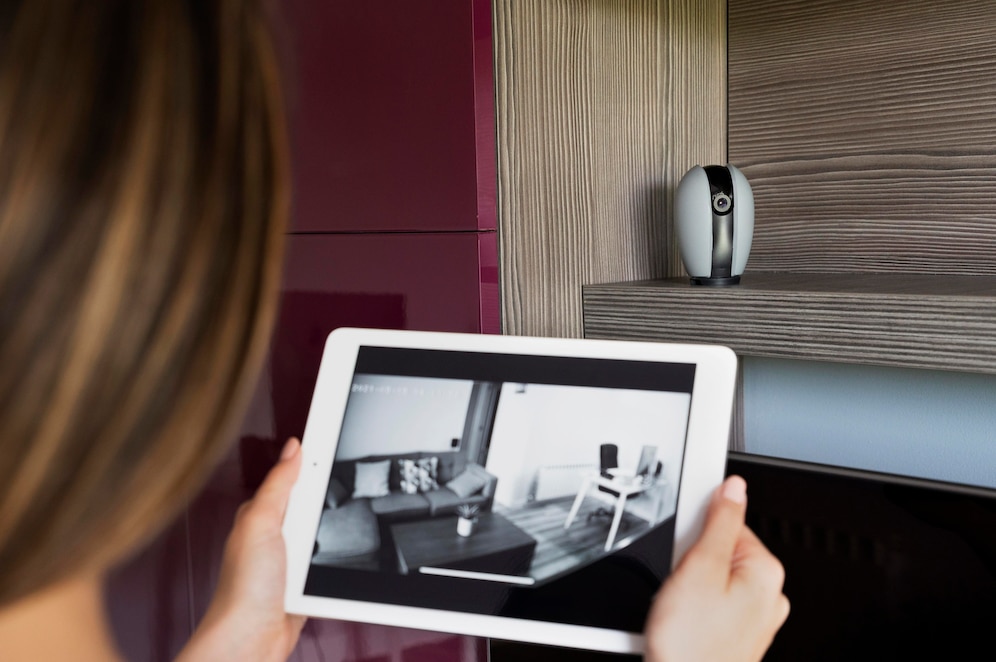Residential surveillance cameras are being recognized as a vital tool for preserving security and peace of mind in an ever-changing society. As technology progresses, so does the possibility of protecting our homes and loved ones. Understanding the fundamentals of residential surveillance cameras is critical whether you’re a tech-savvy homeowner or a concerned citizen trying to improve the security of your house. In this comprehensive tutorial, we will delve into the eight most important things you should know about domestic surveillance cameras, including their benefits, types, installation, and legal implications. By the conclusion, you’ll have the information to make informed judgments and outfit your home with the best surveillance system.
1. Increased Home Security
Residential surveillance cameras form the first line of defense against potential intruders and unwarranted activities. With their unblinking vigilance, these cameras keep a watchful eye on your property 24/7. The mere presence of a visible surveillance camera can act as a powerful deterrent, discouraging criminals from targeting your home. Moreover, modern surveillance systems often come equipped with motion sensors and smart technology, alerting you immediately via mobile notifications in case of any suspicious activity. This real-time awareness empowers homeowners to take prompt action and notify authorities if necessary, increasing the chances of thwarting potential threats.
2. Various Types of Cameras
Residential surveillance cameras come in a diverse range of types, each tailored to specific monitoring needs. Dome cameras offer 360-degree coverage and are often preferred for their inconspicuous design. Bullet cameras are suitable for outdoor use due to their weather-resistant properties. For discrete surveillance, consider hidden cameras, which can be integrated into everyday objects. Pan-tilt-zoom (PTZ) cameras enable remote control and rotation for a broader view. Additionally, there are wireless cameras that eliminate the need for cumbersome wiring, simplifying installation while maintaining excellent functionality.
3. High-Quality Video Resolution
Video quality is a crucial factor in surveillance camera systems. Modern residential cameras boast high-definition (HD) and even ultra-HD resolution, ensuring clear and crisp footage. A higher resolution allows for better facial recognition, making it easier to identify potential intruders or visitors. Some cameras are equipped with night vision capabilities, ensuring that monitoring is not limited to daylight hours. When choosing a surveillance camera, opt for one with optimal resolution and night vision features to guarantee maximum efficiency, even in low-light conditions.
4. Remote Monitoring and Accessibility
Gone are the days when surveillance cameras were only accessible through complex on-site monitoring systems. With advancements in technology, residential surveillance cameras can now be accessed remotely through smartphones, tablets, or computers. By installing the camera’s dedicated app, homeowners can conveniently view live feeds, review recorded footage, and manage camera settings from anywhere with an internet connection. This feature is particularly beneficial for frequent travelers or those who spend considerable time away from home, as it provides constant reassurance and control over the security of their property.
5. Storage and Cloud Options
The storage of surveillance footage is a critical aspect to consider when selecting a residential camera system. Some cameras store recorded data on local memory cards, while others offer cloud-based storage solutions. Local storage provides complete control over the data and eliminates subscription costs, but it may also pose a risk if the camera is tampered with or stolen. On the other hand, cloud storage offers secure off-site backup, ensuring footage is safe even if the camera is damaged or stolen. Weighing the pros and cons of each option will help you determine the most suitable storage solution for your needs.
6. Privacy and Legal Considerations
While residential surveillance cameras contribute significantly to home security, their usage must be mindful of privacy and legal concerns. Before installing cameras, familiarize yourself with local laws and regulations regarding surveillance on private property. In some regions, there may be restrictions on camera placement, particularly with respect to capturing footage beyond your property boundaries or into neighbors’ homes. To avoid legal issues, it is crucial to inform visitors, guests, or service providers about the presence of surveillance cameras on your property.
7. Integration with Smart Home Devices
The integration of residential surveillance cameras with smart home devices has become increasingly popular. Many modern cameras can be linked to smart home platforms, enabling seamless automation and enhanced security. For example, you can set up your cameras to work in tandem with motion-activated lights or doorbell cameras. Integration with voice-controlled virtual assistants also allows for convenient camera management through simple voice commands. This harmonious synergy creates a robust security ecosystem that fortifies your home against potential threats.
8. Professional Installation vs. DIY
The installation process of residential surveillance cameras can be a deciding factor for many homeowners. While some may prefer the convenience of DIY installation, others may opt for professional services to ensure proper setup and positioning. Professional installers possess the expertise to strategically place cameras for maximum coverage and effectiveness. However, DIY installation kits have also improved significantly, making the process user-friendly for tech-savvy homeowners. Assess your comfort level with technology and consider the complexity of your surveillance system before deciding between DIY installation and professional assistance.
Conclusion
Residential surveillance cameras have emerged as an essential aspect of modern home security, providing homeowners with unmatched peace of mind and control over their property’s safety. Understanding the various types of cameras, video resolution, remote accessibility, storage options, and legal considerations is crucial when selecting the best surveillance system for your needs. By combining technology, vigilance, and informed decision-making, you can fortify your home against potential threats and create a safe haven for you and your loved ones. Invest wisely in a reliable residential surveillance camera system, and let it serve as your ever-watchful guardian, ensuring the protection of all that matters most.












